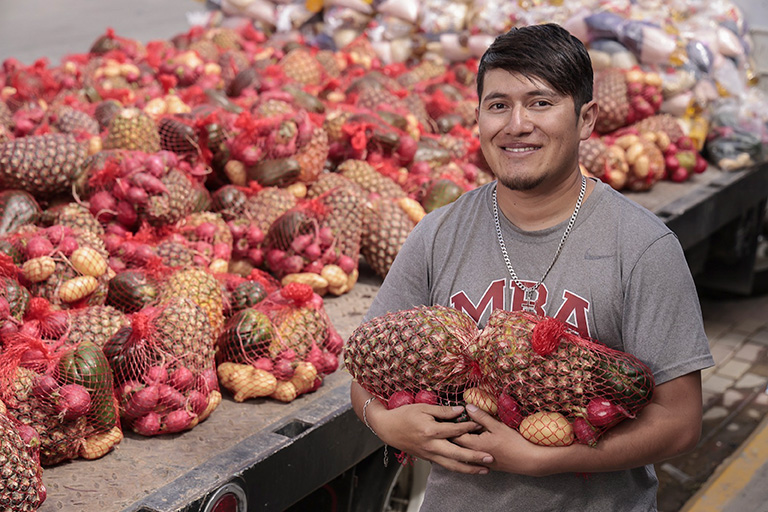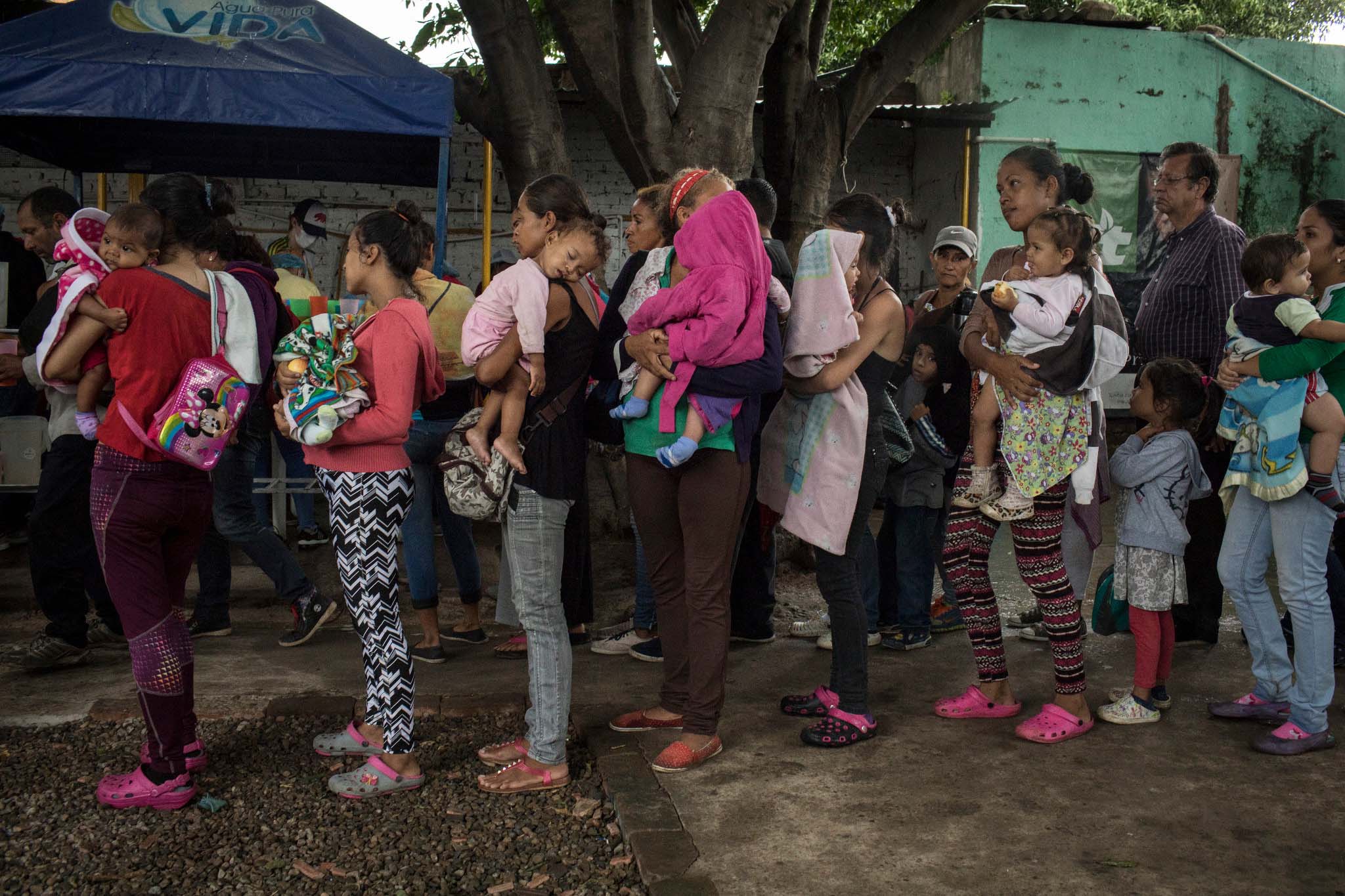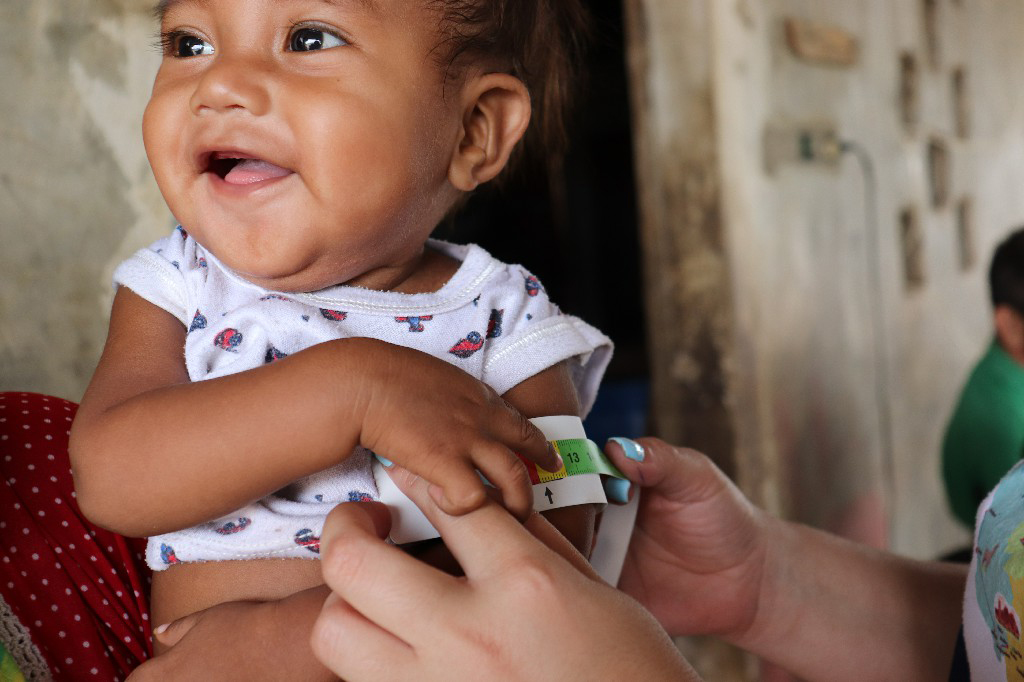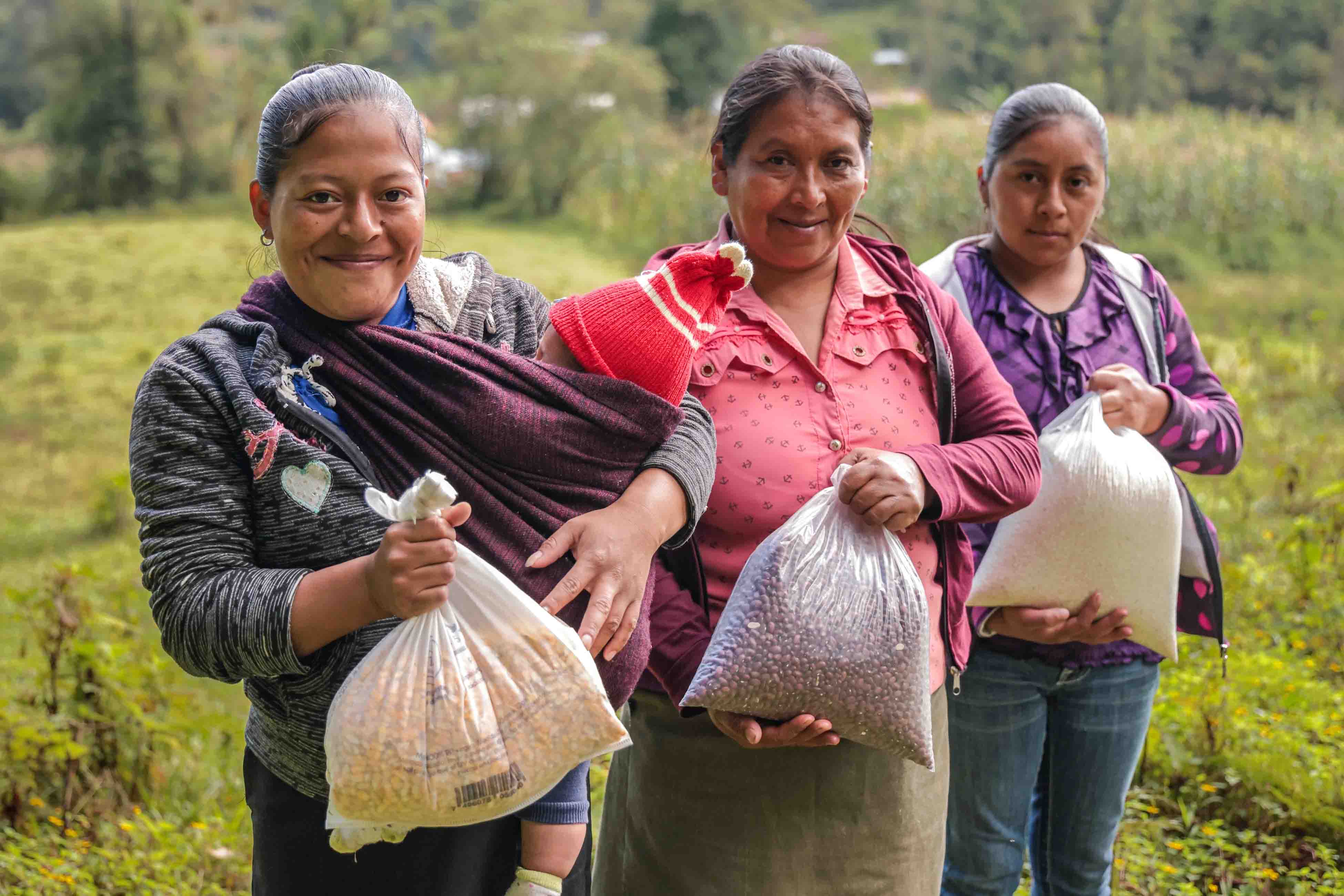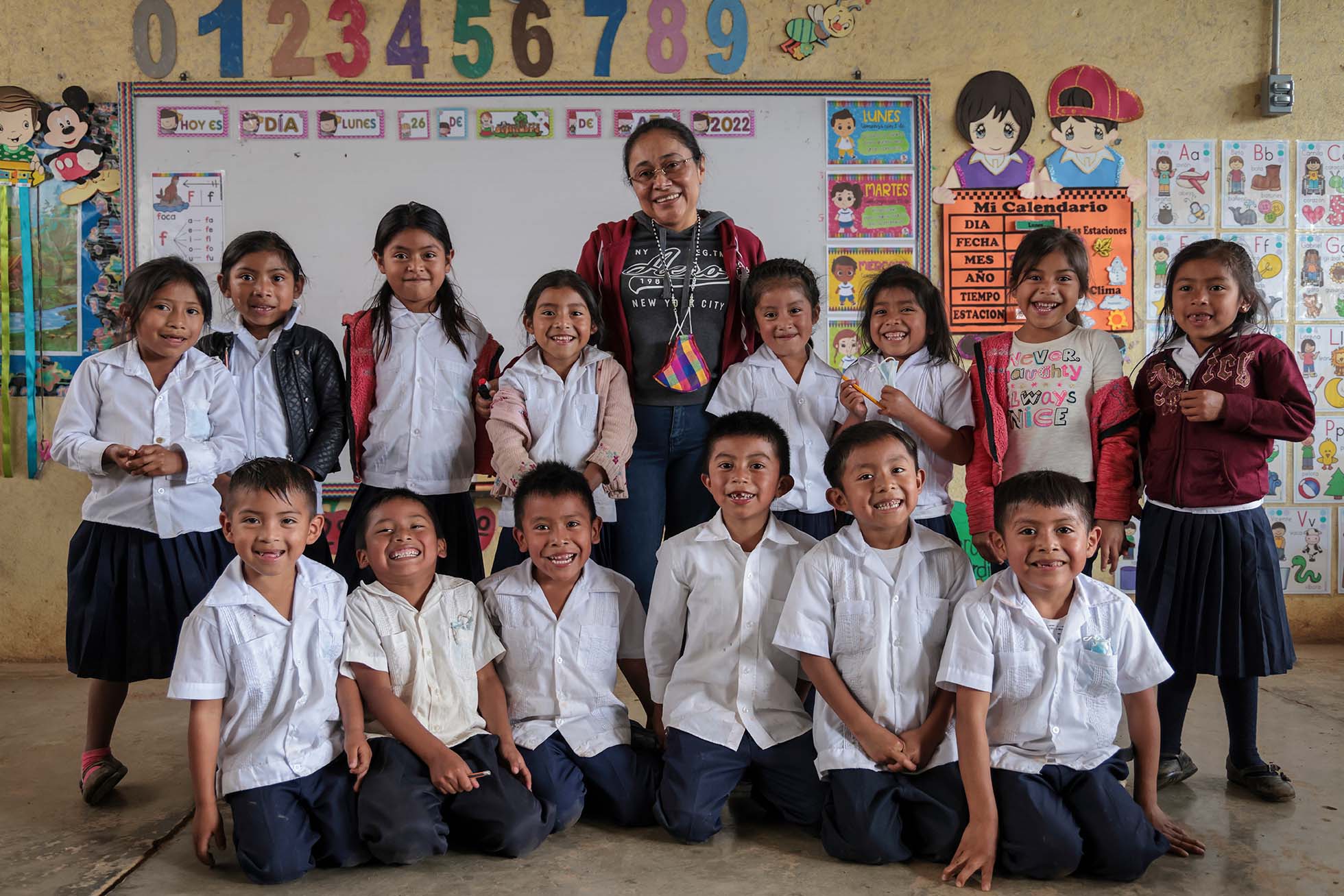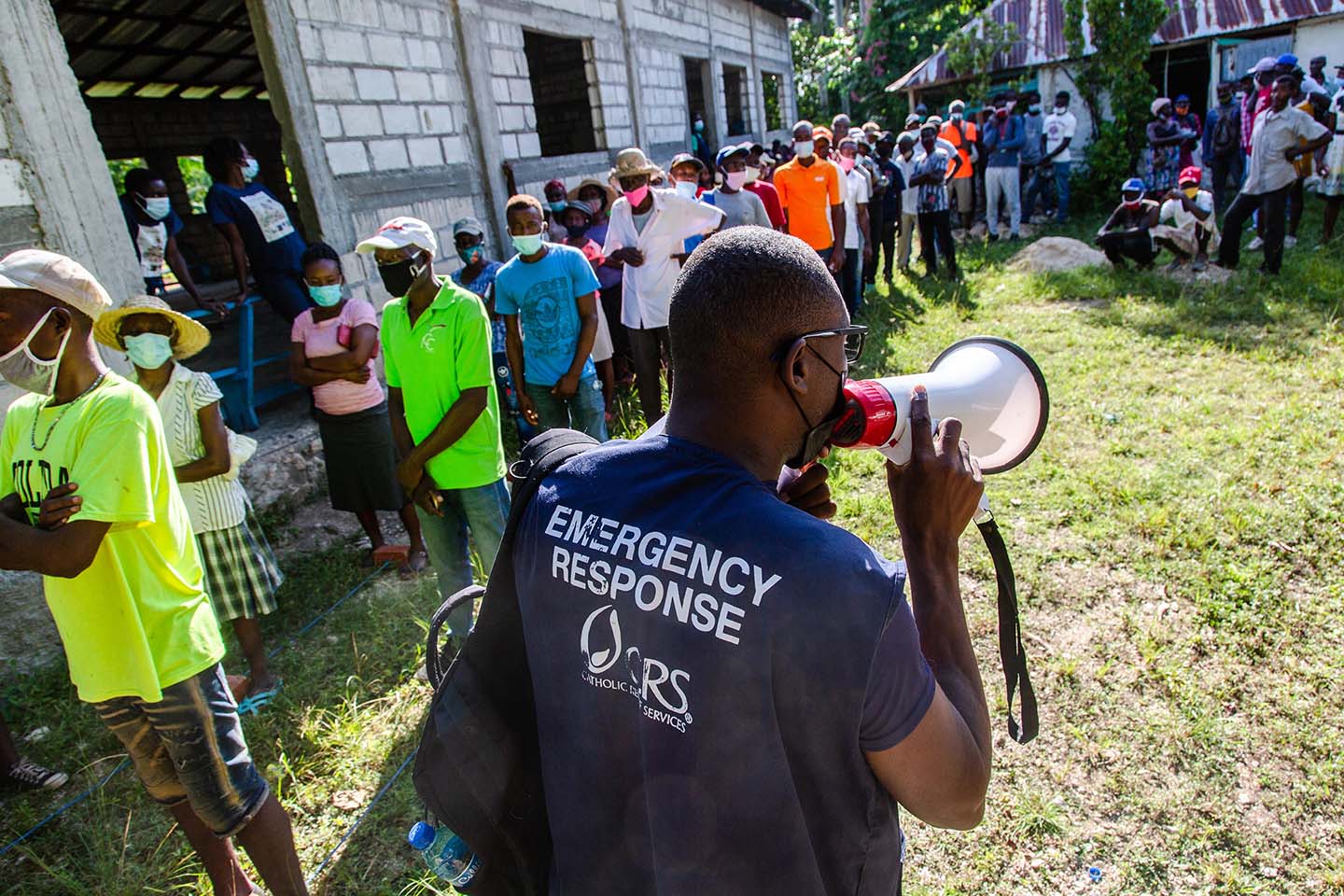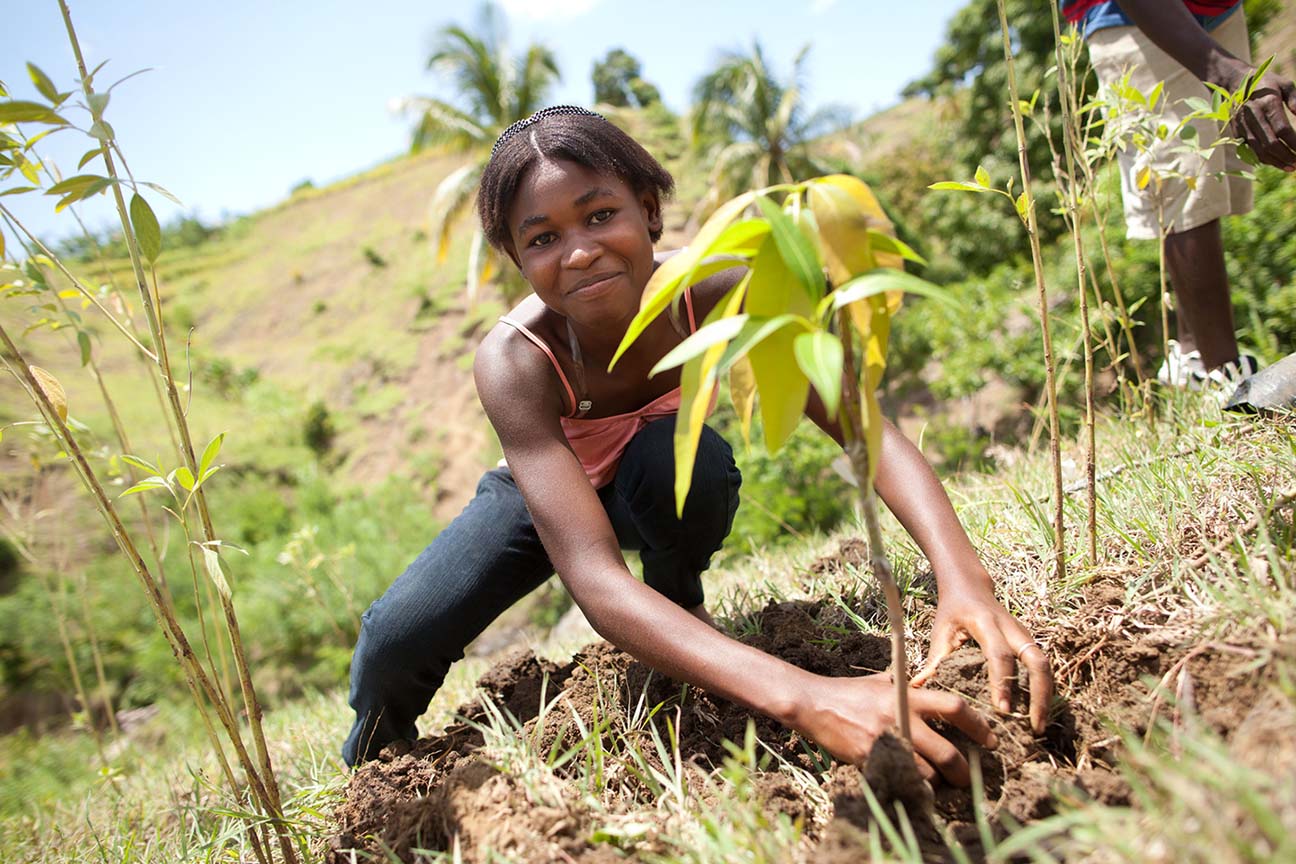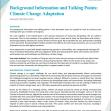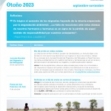Hunger in Latin America: Facts and How to Help
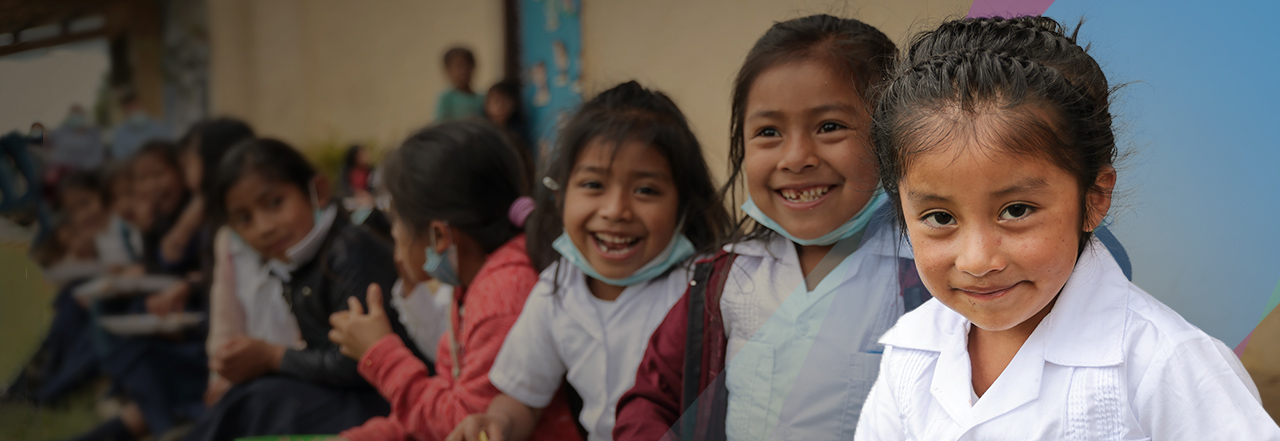
Why is the world in a food crisis?
Millions of people worldwide are experiencing life-threatening levels of hunger and malnutrition on an unprecedented scale. Conflict, especially the war in Ukraine, displacement, climate change, the economic impact of the pandemic, and the excessive food cost increase has triggered a global food crisis.
In other words, many people - most of them in developing countries - are without access to enough food to live.
MEDIA CONTACT
Robyn Fieser
Deputy Director of Communications, Latin America and the Caribbean
Food Price Inflation
The increase in food prices has significantly limited the ability of families - especially the poorest - to buy enough food to live.
Climate Change
Extreme weather events such as storms and droughts have destroyed crops, particularly those belonging to small farmers. Climate change is making it harder to grow food.
War and Conflict
When conflict or war breaks out, affected people are forced to flee in search of safety. During this displacement, they can go days without food.
What countries have been most affected by the global food crisis in Latin America?
In Latin America and the Caribbean, the food crisis has significantly affected Haiti, Venezuela, and the Dry Corridor of Central American countries, such as Guatemala and Honduras.
Haiti
According to the most recent report from the Network of Early Warning Systems against Famine, the sociopolitical crisis and insecurity at ports and highways in Haiti are causing food supply distributions and soaring prices for food and fuel. Gasoline prices have doubled, and inflation now stands at 33%.
In addition, generalized insecurity has disrupted the normal flow of transport and the functioning of the market, especially in cities, limiting the population's access to food. The latest analysis by the United Nations indicates that 4.7 million people in Haiti are in a situation of extreme hunger.
Also, the destruction caused by the 2021 earthquake worsened the already existing vulnerability of the most affected population and aggravated the humanitarian crises. Before the quake, poor households were projected to become increasingly dependent on local markets, but the catastrophe affected their normal functioning.
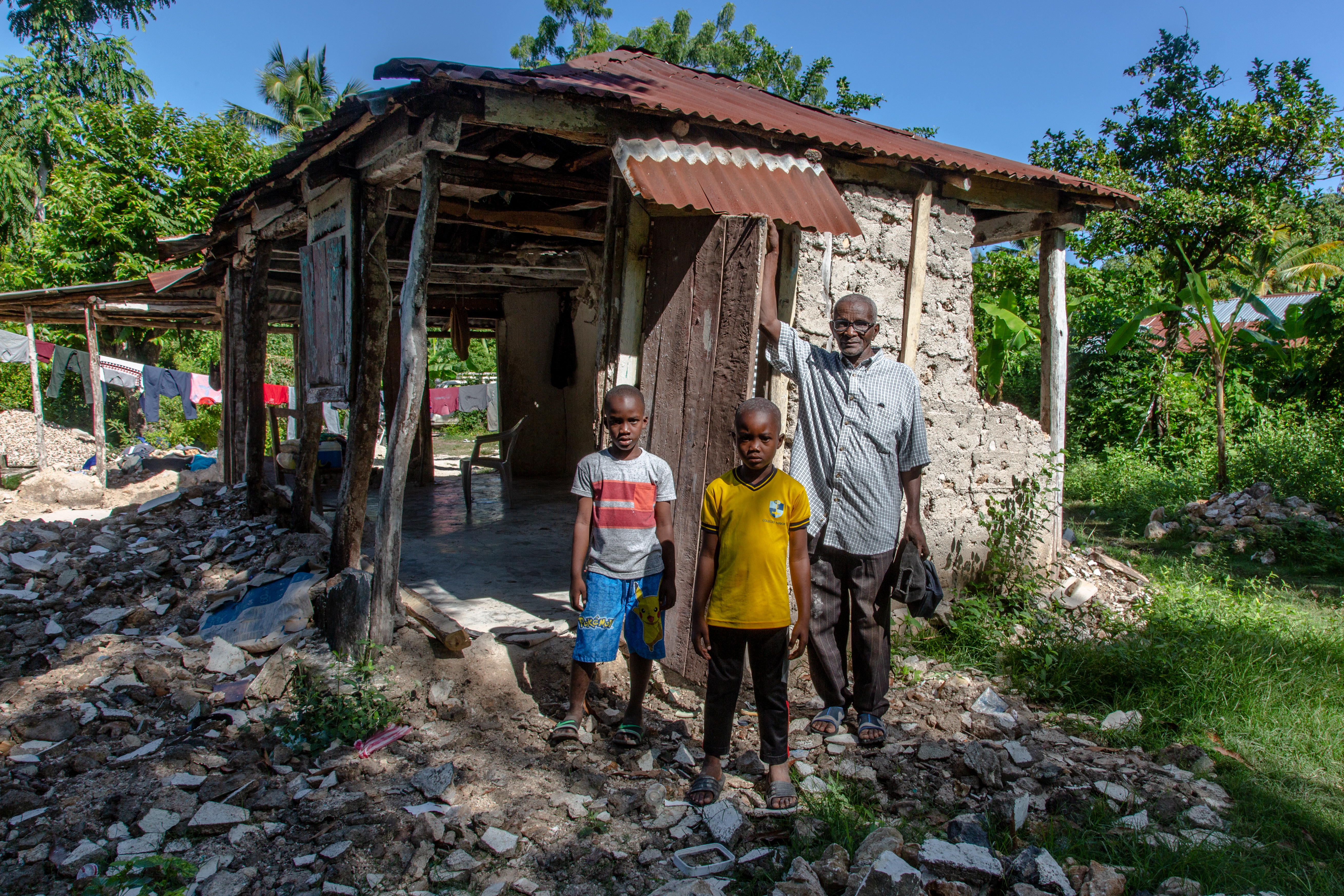
The 2021 earthquake that shook southern Haiti left more than 52,000 homes destroyed. This disaster occurred amid political and economic instability, rising hunger, and gang violence. Photo by Georges Rouzier for CRS.
Venezuela
Venezuela has experienced a deep economic and social crisis for years. More than 90% of its population lives below the poverty line, and thousands of children suffer from malnutrition. In addition, fuel shortages have become so severe that farmers cannot carry out their agricultural activities or travel to their workplaces, which has severely affected their ability to purchase food.
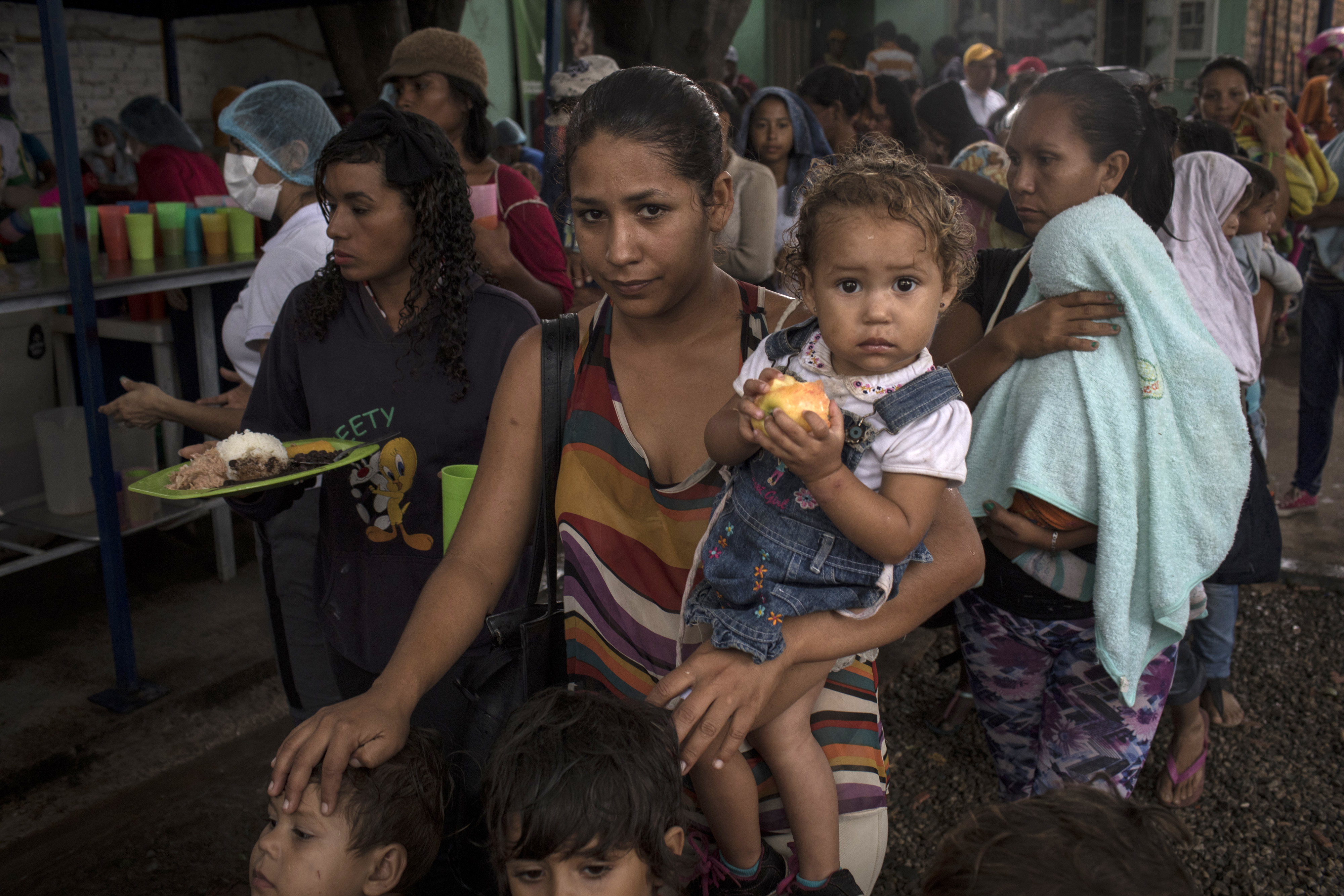
Venezuelan families line up at the Casa de Paso Divina Providencia in Cúcuta, Colombia, to receive free food and basic medical care. Children, the elderly and pregnant mothers receive food first. Photo by Nicoló Rosso for CRS.
The leading causes of hunger in Venezuela are inflation, which reached 11.8% during the first months of 2022; the devaluation of the national currency; the drop in the price of oil and the decrease in oil extraction, the country's main economic activity; the international sanctions imposed; the low purchasing power of the Venezuelan minimum wage, which barely reaches $16 USD a month; and high food price inflation.
According to the annual survey "Living Conditions of Venezuelans (ENCOVI, for its acronym in Spanish)" of the Andrés Bello Catholic University of Venezuela, between 2017 and 2021, a sustained increase in Venezuelan households suffering from food insecurity has been reported.
More than 94% do not have enough food to live on. The populations most vulnerable to the impact of hunger are children under five years of age, pregnant women, nursing mothers, and the elderly.
Guatemala
The majority of the Guatemalan population lives in poverty. The food security and income of 49% of the people depend on the demand for unskilled labor, especially in agriculture. These jobs offer poor working conditions and inconsistent demand, which exposes many families to permanent food insecurity.
On the other hand, there is a predictable and recurring deterioration in the food and nutritional situation of households between April and August due to the dry season, which leaves families without food reserves or work. This is known as seasonal hunger.
The population most affected by food insecurity are small farmers and traders. According to the Food Security Survey (FSS) of the World Food Program (WFP), 28% of Guatemala's population reports limited and poor food consumption.
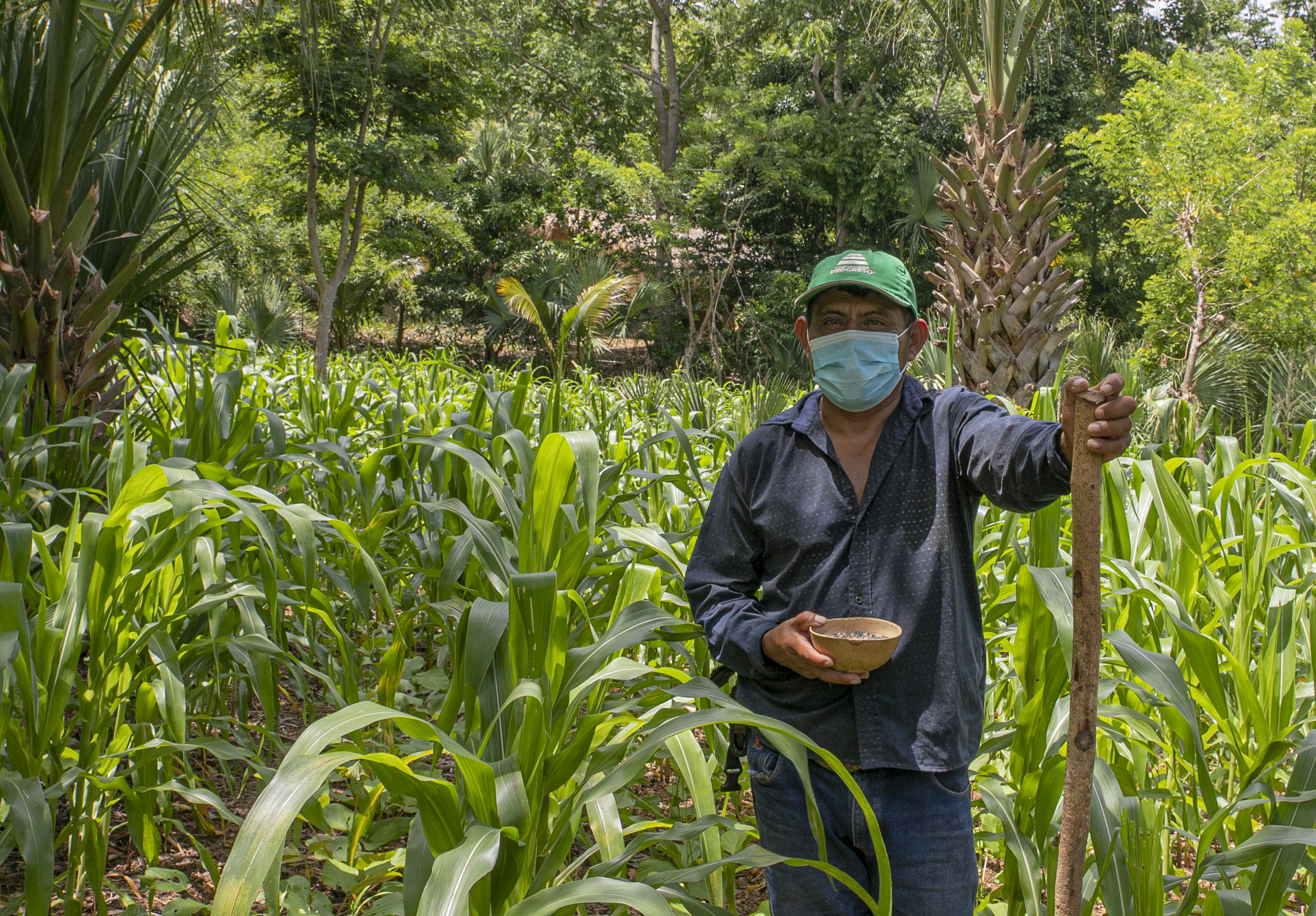
Santos López is a farmer from a community living in Guatemala's Dry Corridor, where years of soil degradation have left the region's crops extremely vulnerable to drought and families without food. Photo by Dinorah Lorenzana/CRS.
Honduras
In Honduras, hunger has multiple causes, mainly poverty and the impact of climatic phenomena. The country has a very inequitable economic development model and a high dispersion of poverty.
Honduras is also highly vulnerable to climate change, especially to the recurrence of droughts and floods. This vulnerability has significantly impacted the households of small farmers, who often face damage to their crops.
Rural families in Honduras are still recovering from the impacts of Hurricanes Eta and Iota, which hit the country within weeks of each other in 2020. All of this, coupled with the economic fallout from the COVID-19 pandemic, has diminished the purchasing power of Hondurans and generated hunger, especially among those with lower incomes.
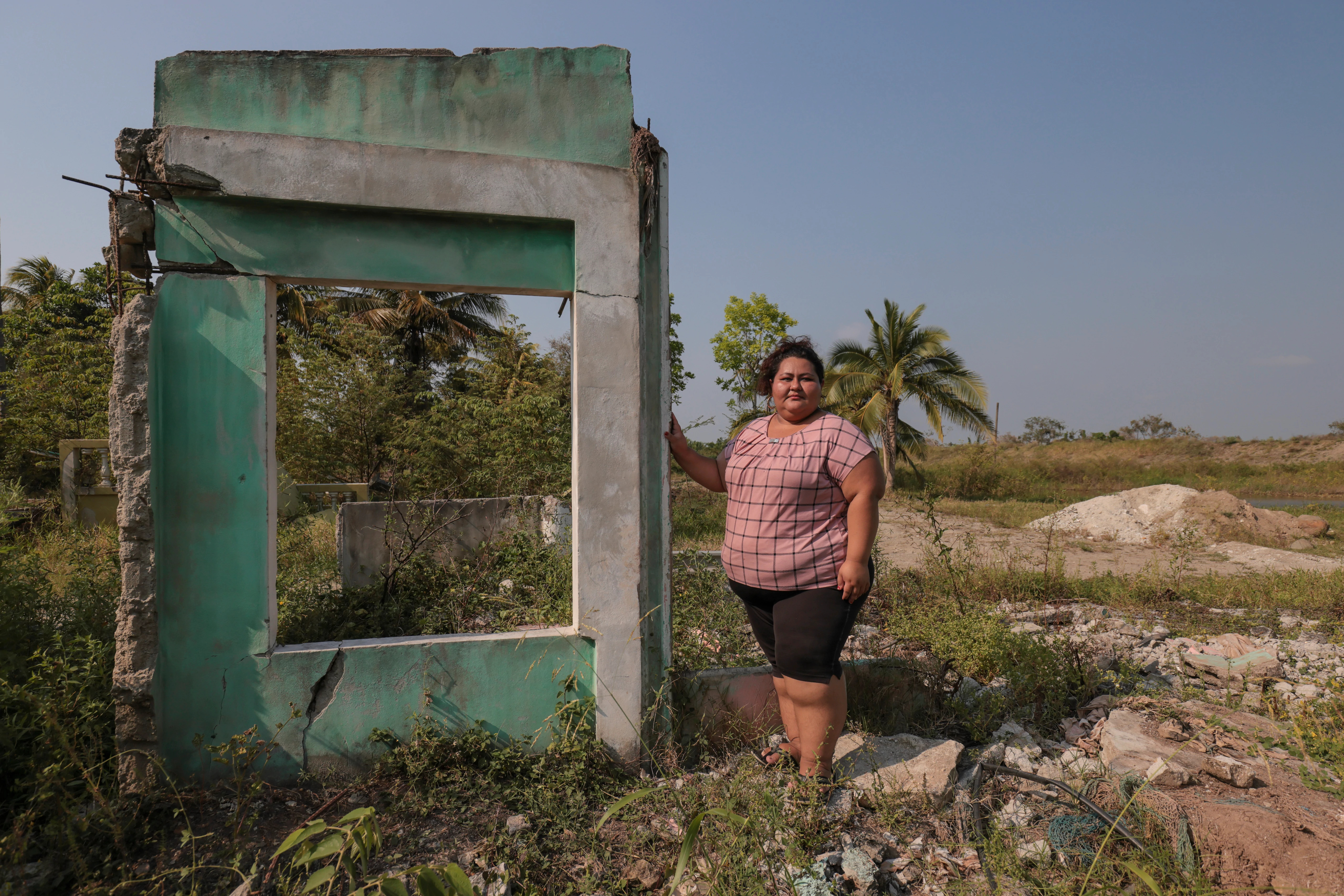
Mirian García lost her home to a nearby river overflowing when hurricanes ETA and IOTA hit Honduras in 2020. CRS supported her community to rebuild their homes and water systems. Photo by Oscar Leiva/Silverlight for CRS.
In addition, the war in Ukraine increased the price of fuel and essential food basket products, worsening the country's food situation. According to the latest "Monitoring Study of Food and Nutrition Security Indicator" of the Government of Honduras, more than 65% of households do not have enough income to cover the costs of the basic food basket.
What is CRS doing to fight hunger in Latin America?
CRS and its partners work together in the countries most affected by hunger and malnutrition worldwide. We focus on ensuring access to nutritious and sufficient food, sometimes through multi-purpose cash assistance that participants can use to buy basic household necessities and restock agricultural supplies such as seeds and farming tools.
We also provide healthcare, water, and basic sanitation and work with the communities most affected by food insecurity to help them recover their livelihoods.
In agricultural communities impacted by food insecurity, we carry out seed distribution and training in sustainable agriculture techniques so that farmers recover their crops affected by extreme weather events and are more resilient to climate change.
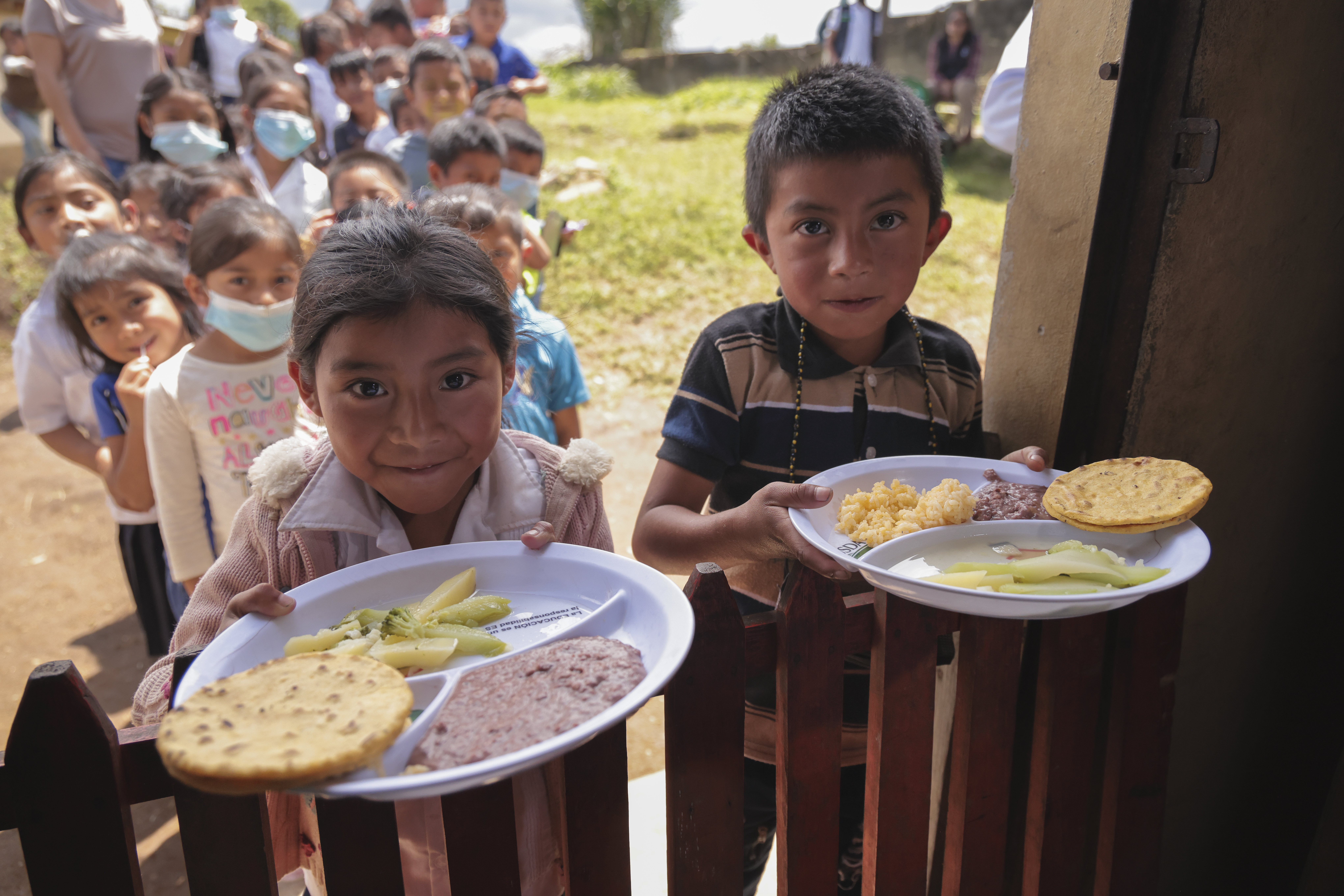
Children in Intibucá, Honduras, receive meals at their school and rations to take home every day with support from CRS. Thanks to these foods, they manage to overcome malnutrition. Photo by Oscar Leiva/Silverlight for CRS.
We support the communities in Honduras and Guatemala to fight hunger through school feeding programs for children, which allow them to overcome malnutrition while improving their academic performance. We also distribute food rations to participating students to take home to their families.

Dexy González and her son were affected by storms Eta and Iota in Guatemala. The family received multi-purpose cash transfers that they used to buy food and grow vegetables for their consumption and to sell. Photo by Dinorah Lorenzana/CRS.
FAQ
What is a food crisis?
According to the Famine Early Warning Systems Network (FEWS NET), a food crisis exists when households can barely meet their minimum food needs. The food crisis can become an emergency when they experience extreme food shortages and are forced to adopt negative coping strategies, such as selling their goods and belongings or leaving their homes.
What are the populations that suffer the most from hunger?
The population that suffers the most from food insecurity is children, especially those under five years of age, and women, especially lactating and pregnant women. The population of rural areas is also among the groups most vulnerable to food insecurity, due to the effects of climate change on their production systems.
How can I help fight hunger in Latin America?
You can help people most vulnerable to food insecurity and malnutrtion to recieve food by:
Donating to CRS: The money you contribute allows us to continue to implement our school feeding and food security programs for families affected by hunger.
Another way to help those who suffer from hunger is by supporting our advocacy campaigns in front of the United States Congress. With only your signature you can demand that your congressional representatives finance international aid programs to face the global food crisis.
How else can you help?
Can you help us to get the word out?
Follow and retweet @catholicRelief and @CRSNews on Twitter for the latest updates.
